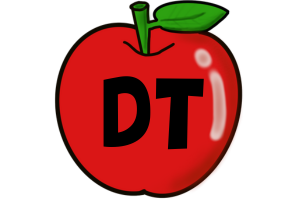Mastering Abbreviations in ESL Learning: Effective Teaching Strategies
Learning a new language is a significant task, and English, with its countless nuances, can be particularly challenging. One of these complexities is the use of abbreviations – shortened forms of words or phrases commonly used in written and spoken English. For English as a Second Language (ESL) students, mastering abbreviations can be a key step towards fluency. Here are some strategies that can make teaching abbreviations more effective.

Understanding the Importance of Abbreviations
Before diving into teaching abbreviations, it’s crucial to explain their importance to ESL students. Abbreviations are widely used in various contexts, such as in business communication, texting, and social media, and understanding them can greatly enhance a student’s comprehension and versatility in using English.
Begin with the Basics
Start by introducing the most common and widely used abbreviations. This could include acronyms (e.g., NASA, ASAP, LOL), initialisms (e.g., FBI, BBC, USA), and short forms (e.g., info, app, ad). Explain how they are formed and used. Providing examples in context will help students understand their practical usage.
Create a Regular Learning Schedule
Don’t overwhelm students by teaching too many abbreviations at once. Instead, introduce a few at a time and allow students to practice using them. This can be done by incorporating a ‘abbreviation of the day’ or ‘abbreviation of the week’ into your lessons.
Use Real-Life Examples
Expose students to abbreviations in authentic contexts. This could involve analyzing newspaper articles, social media posts, text messages, or emails that use abbreviations. Discussing these real-world examples can help students understand how abbreviations are used in everyday communication.
Practice through Activities
Repetition and practice are crucial in language learning. Incorporate activities and games that allow students to use abbreviations. For example, you might have students write emails or text messages using certain abbreviations, or play a game where students match abbreviations with their full forms or meanings.
Teach Cultural Context
Many abbreviations, particularly those used in informal language and online communication, have cultural connotations. Discussing these can enhance students’ cultural understanding and help them use abbreviations appropriately.
Introduce Abbreviations in Thematic Units
When teaching subject-specific or thematic units, introduce relevant abbreviations. For example, in a unit on space exploration, introduce abbreviations like NASA, ISS, and UFO.
Encourage Self-Learning
Encourage students to take note of unfamiliar abbreviations they encounter outside of class and look up their meanings. This promotes autonomy and motivates students to engage actively with the language.
Teaching Abbreviations Can Be Fun
Teaching abbreviations is also often particularly interesting for students, as they might have used or heard abbreviations like ‘CEO‘ for eons without ever speculating what it stands for or incorrectly assuming that ‘Re:‘ in their emails is just a shorter way of writing’ reply.’
Some classroom time specifically spent on teaching abbreviations can thus be an excellent way of teaching lengthier expressions and the shorter words that make them up.
In this article, we have incorporated everything you need to know about teaching abbreviations to your students to help you with the task.
What are Abbreviations?
We feel that the definition of ‘abbreviation’ is expansive as it encompasses anything that is shorter when written and/or spoken than the expression or word that it originates from. Hence, the forms of abbreviations that you must include or which might more naturally come up in class are:
Acronyms: including initializations such as ‘ASAP’ for ‘as soon as possible’ or similar words where few alphabets replace an entire word such as ‘PJs’ for ‘pajamas.’
End cut-off words: terms that have the end cut off, such as ‘memo’ for ‘memorandum’ and ‘uni’ for ‘university.’ Similarly, there are words that have end cut-offs and add another sound to it, e.g., ‘lappy’ for ‘laptop.’
Middle cut-off words: words with their middle portion cut off, for example, contractions like ‘Dr’ for ‘doctor’ or ‘I’m’ for ‘I am.’
Words replaced by alphabets: words or expressions replaced by alphabets with similar sounds, e.g., ‘C U’ for ‘see you.’
Changes in pronunciation or spelling: e.g. ‘sarnie’ for a sandwich
Use of numbers: expressions that involve numbers to represent a word, e.g., ‘Q4’ for ‘fourth quarter.’
Abbreviation Teaching Approaches
There are generally four main approaches to presenting and practicing abbreviations for the first time in class:
- Let the students try to work out, guess, or remember the lengthier version of the abbreviations.
- Let the students try to work out, guess, or remember the meaning of the abbreviations.
- Let the students try to work out, guess or remember what the abbreviated form of expressions and words are
- Ask students to use an abbreviation, including sentence, and later try to remember what its meaning and complete forms is
With some abbreviations like ‘Just a mo,’ it is possible to provide students with enough context to work out the meaning of the abbreviation, particularly if they’re already aware of the lengthier form or have somewhat knowledge about it. Whereas, with other abbreviations, students may require a bit more help. In that case, you can do the following:
- Give multiple choice options
- Make them choose from a list of possibilities shown at the bottom of the page
- Give a list of possible continuations
Bear in mind that whichever approach you select ensures that it best fits with your students’ academic level and age.
3 Classroom Activities for Teaching Abbreviations
You can make the teaching process more compelling with exciting and fun classroom ideas. Some activities for teaching abbreviations in class are:
Activity #1: Abbreviation Jigsaw
- Create a pack of cards with the lengthier form of the abbreviations split in two.
- Left card should generally have the abbreviation, and the right should contain the continuation that would complete the expression. For example, ‘Re’ on the left card and ‘-garding’ on the right one.
- You can also incorporate context to help the students match both sides; for example, on the left card, write ‘I am writing to you re’ and continue on the right ‘-garding our meeting next week.’
Note: if you want to involve expressions abbreviated more than once, such as ‘fin tech,’ the right card must hold both parts’ continuations, for example, ‘ancial –nology.’
Once the students are done with the activity, make sure to check and discuss the answers with the entire class.
Activity #2: Abbreviation Bluff
Bluffing games in teaching abbreviations are effective and useful at the presentation as well as for practice stages. It consists of students mixing up false and true information about abbreviations and their meaning, uses, meaning, lengthier forms, etc., and views if other students can determine the true bits.
- For this activity, you can divide the class into two or more groups to create a sense of competition. Example of false information that might fool the other team involves:
- The lengthier form of a word is split to make an abbreviation, e.g., ‘labo’ for ‘laboratory.’
- Mentioning wrong lengthier forms such as ‘watery convenience’ for ‘WC.’
- Similarly, students can say or write abbreviations for two or more related words and can test the other team on which are not typically used in a speech, e.g., we say ’50p’ for ’50 pence,’ but it is an incorrect spoken form of ’50c’ for ’50 cents’.
Activity #3: Abbreviation Hangman
This activity is a slight variation of the traditional spelling game Hangman. To win this game, students must successfully guess the abbreviation.
- Although all the alphabets of the lengthier form are filled in as they pick them. For instance, the letters’ RE_EREE’ are inserted if they ask for the alphabets’ E’ and ‘R,’ but to save their man and win the round, they must guess the word ‘ref.’
- Bonus points can also be given for correctly guessing the lengthier form, too, but without any further clues once the abbreviation has been successfully guessed.
- If you’d like to encourage student engagement, the student acting the teacher role could give hints on the abbreviation’s meaning, use, meaning, or formality such as ‘it is a business expression’ or ‘The abbreviation is also used in our language.’
Conclusion
Teaching abbreviations effectively can significantly enhance ESL students’ comprehension and fluency in English. By incorporating these strategies into your teaching, you can make the process of learning abbreviations engaging, meaningful, and fun for your students. The mastery of abbreviations not only aids in understanding English but also provides a valuable insight into the culture and everyday life where English is spoken.


